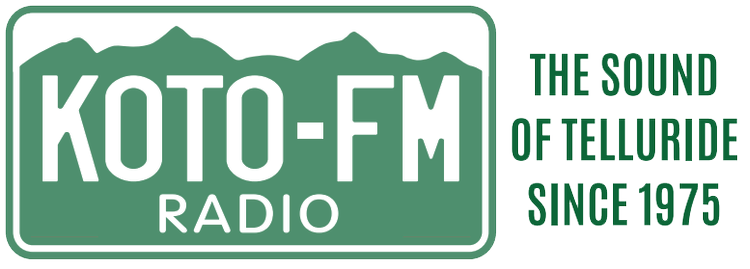By Julia Caulfield
A cloudy day, with slushy now spitting from the sky may not seem like the ideal time for taking a trip to a solar array. But that doesn’t seem to dampen Tim Erdman’s spirit.
“It was 100 and some, now it’s 219 kilowatt hours. We’re putting power on the grid. I mean, that’s exactly what’s happening, carbon free power being put on the grid, and that’s a good thing. Anything we can do to help,” says Erdman looking at a power meter.
Erdman is the owner and operator of the Last Dollar Community Solar Garden, just outside Telluride, behind the airport. He bought the property around 2010, with the hopes of creating a small solar garden. Now, after close to a decade, his dream has come to fruition.
“These are the inverters that convert the DC power coming out of the solar panels to AC. The fact that it’s humming means it’s producing. I don’t think it’s above freezing right now, but these are thawed because these are known as bifacial solar panels and they’re glass on both sides with the solar panels sandwiched between them. Even when there’s snow on the top side, the bottom side will absorb reflected light and create some heat that should help clear the tops of snow,” Erdman explains as he gives a tour of the solar garden.
According to Erdman, the solar garden holds just over 800 panels, on a little less than an acre of land, nestled into Deep Creek Mesa.
“It’s really as unobtrusive as it might be. You can’t see this from many places because of the ridges on both sides, and yet we have the full center of the day’s sun – which is when you get most of your production anyway,” he notes.
Erdman began constructing the solar array last fall. Now that it’s up and running, he plans to begin offering subscriptions to the energy. Erdman says individuals or businesses will be able to buy subscriptions up to 25 kilowatts, for 20 years.
The San Miguel Power Association will monitor the energy produced by the solar array and apply a credit to subscriber’s monthly energy bill.
According to Terry Skyler, Energy Services Executive for San Miguel Power Association, the solar garden isn’t the most cost effective way to use solar. He notes users get a larger credit from SMPA if they add solar panels to their own home. But he adds, subscribing to the solar garden can be a good option for those who don’t have the money, sunlight, or space to install their own panels.
Skyler notes, “This is a way for them to participate in local renewable generation.”
Erdman recognizes the cost saving isn’t huge, but he adds that’s not the point.
“It’s not as good an investment, but it’s not an investment. This is a subscription to a solar garden, and it’s a way to either offset an impact fee, or it’s a way to show – or to have – solar power being part of your carbon footprint,” Erdman adds.
And the focus on having a smaller carbon footprint is a shift Skyler says he’s seen from SMPA members in general. He says the Last Dollar Community Solar Garden is bringing SMPA up to its 5% cap of locally generated power, based on its contract with Tri-State Generation and Transmission. And SMPA is working with Tri-State to increase that cap. It’s a shift, Skyler says, from when SMPA signed the contract around 30 years ago.
According to Skyler, “The priority was low cost, highly reliable electricity. Our priority as a cooperative of members is shifting towards favoring more local renewables, or more renewables in general. So we’re responding to that demand by maxing out the allowable amount of generation through that policy, and we’re also pushing, and working with Tri-State to amend that policy to meet the needs and wishes of our members.”
Erdman describes the solar garden as a passion project, or a labor of love. He spent his career as an architect, designing medical clinics across the country. But he says ever since he was a student, getting a degree in natural energy systems, he’s believed in the importance of alternative power.
So, aside from selling subscriptions for the solar energy, Erdman says a large focus for him is showing individuals how easy solar can be.
Erdman says, “My dream and my expectation is that as solar panels and photovoltaic equipment improves, it will become part of the build environment. That is, the walls, and the glass in buildings will actually produce photovoltaic solar energy. I’d like to see how much I can help in terms of showing people what can be done, and helping them get it done.”
The Last Dollar Community Solar Garden currently humming along, putting carbon free energy on the grid. Erdman plans to actively begin accepting subscriptions for the solar energy in March.

